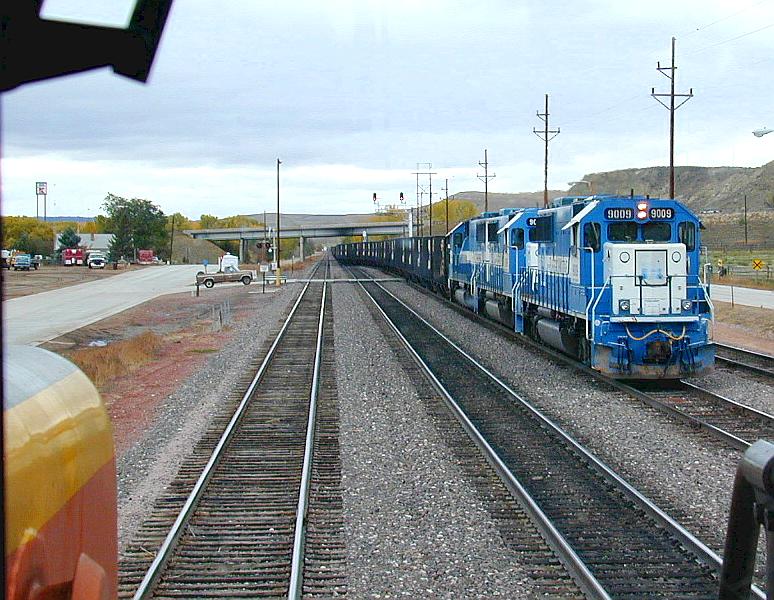
Billings Coal A cloudy Sunday afternoon on Oct 14, 2001 finds me ready to depart Sheridan, WY on the C-EBMBLC-056, otherwise known as the Billings Coal. We have 74 loads, 0 empties, 9912 tons, 4132 feet. The picture is taken from the BNSF 7141 and trailing it are SD45-2 BNSF 6501 and SD40-2 BNSF 6331. An SD60M and SD40-2 are on my rear end ready to shove. The inbound crew has stopped our train in the "coal siding" across from the depot to change crews. An eastbound coal empty powered by three matched EMD SD60s (OWYs) has just stopped in number 1 track to do the same. The mainline is between us. Because the west switch of the yard and the east switch of the coal siding overlap, the yard and siding are often used like this to meet two long trains neither of which will fit otherwise.

Same train but a different day. It is 5am on October 18, 2001 and we are on the E-BLCEBM-057, the Billings Coal (empties) at Billings, MT. We went on duty at Laurel, MT where got our power out of the house. It is three SD60s. Two of them are straight SD60s, EMD (OWY) 9076 and 9006. The third is an SD60M BN 9256. At the carmen shack we threw a FRED up onto the front deck then ran through the yard and departed with the light power.With just the 3 SD60s it is a fast 14 mile run from Laurel to Billings. There we stop at the rear of our train to attach the FRED. I then run the power by the train at about 6 mph while the conductor stands on the front steps and checks that all the airhoses are coupled as we go by. If we find any uncoupled I'll stop and he will get off to lace them up. At the east end we back the power onto the train and begin pumping up the air.
When the train is charged I make a 20 psi set for the air test. The conductor walks the train from the head end to the rear end observing that each car's brakes set up and checking that all handbrakes are off. Upon reaching the rear end he will close the anglecock at FRED and radio me to test FRED. I will press the Emergency switch on Mary and we see that FRED actually dumps the air. Then the conductor re-opens the anglecock, climbs onto the last car, and I pull the train out onto the mainline. He closes the switch behind and if the dispatcher permits, I back the train up to pick him up. Otherwise he has to walk up. It depends upon what other track warrants the dispatcher has active. We can't make a blind backup move into the face of another authorized train. In either case he checks to see that each car has fully released.
Photo: Pumping air on the Billings Coal empties. We need 75 psi on the rear end and less than 60 cubic feet per minute of airflow before applying the brakes. Though fuzzy you can see that FRED shows only 70 psi on Mary and the flow meter is still near 80 cu-ft per minute. We'll be pumping a few more minutes yet.
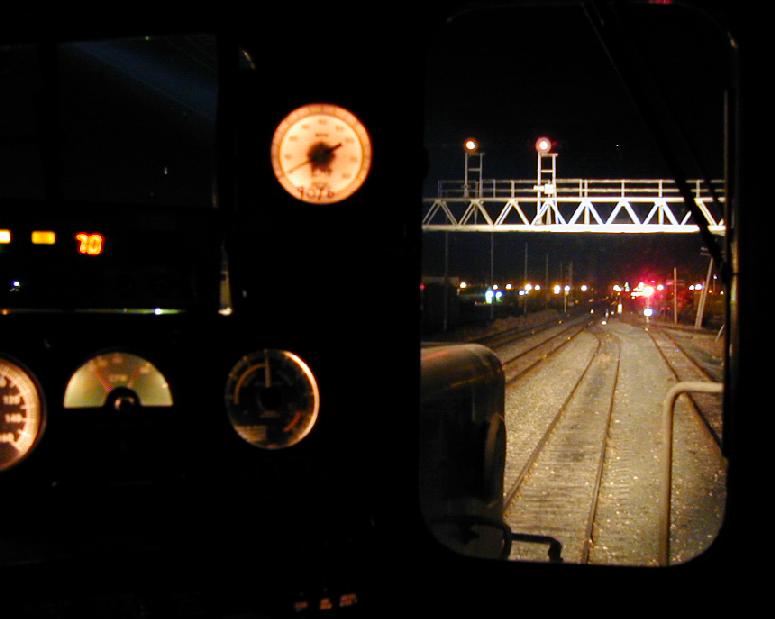
Track Detector October 3, 2001. I had just pulled my loaded ribbon rail train into the MRL's Top Yard at Laurel and next to us was one of BNSF's Track Geometry cars. Often refered to as Rock & Roll cars they measure many parameters of the track such as dips, bumps, cross level, and gauge. To maintain maximum track speed, and because of frequent stops and backups, they run as separate trains with just a locomotive, the tool car, and the test car. I like to get called for these as they are good jobs for the train crews.
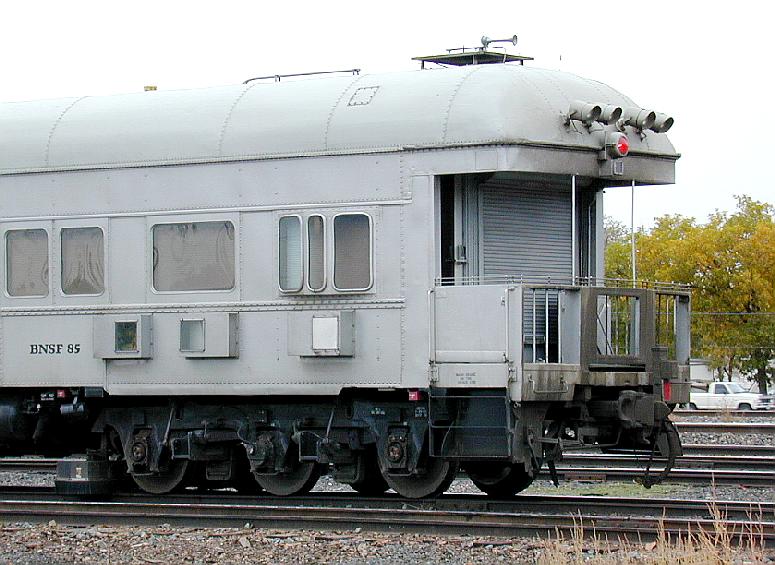
Cab Shots May 21, 2001 at East Billings, MT on the C-SCMCEC-054, unit BNSF 5602 C44AC. An eastbound H-PASKCK is waiting at the end of double track for us to clear him.
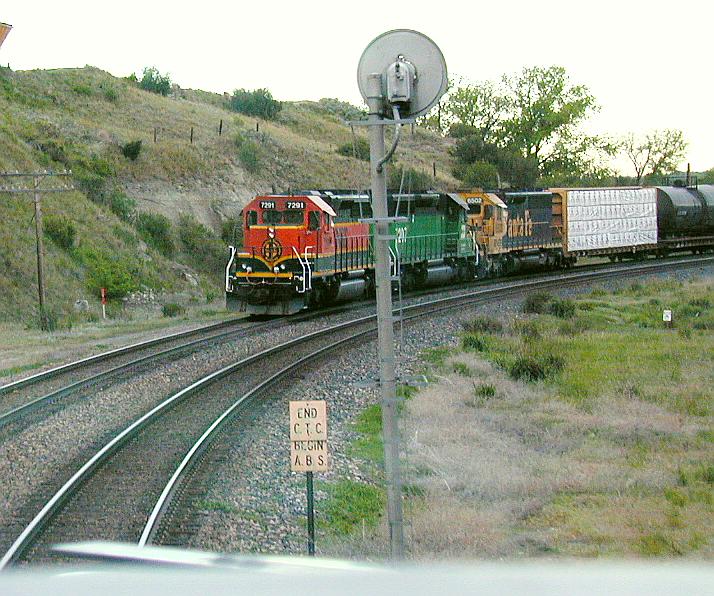
It is a 60 mph sunrise west of Wyola, MT at MP 739 on September 30, 2001. The sun has illuminated the distant hills but is not yet warming the valley along the Little Bighorn River.
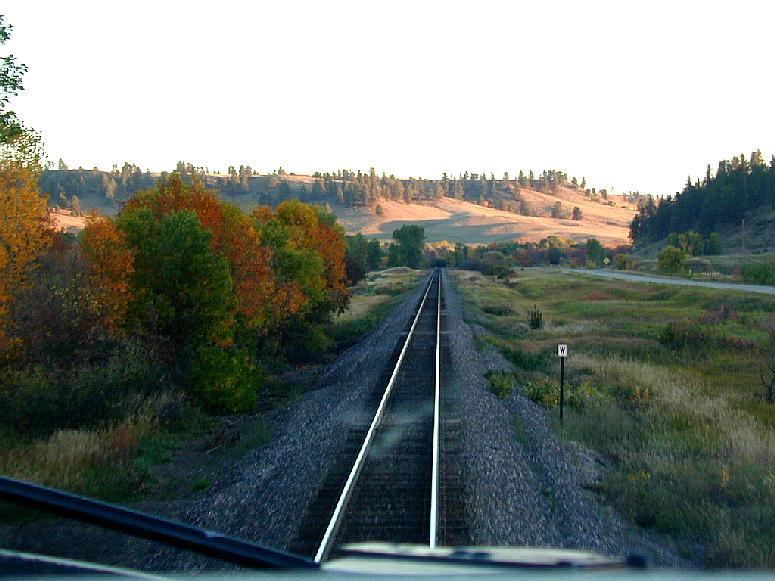

| Return to Tales index | My Home Page | E-Mail me |
Created 10-20-2001
Updated 10-20-2001